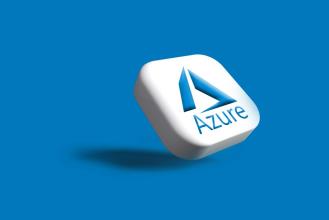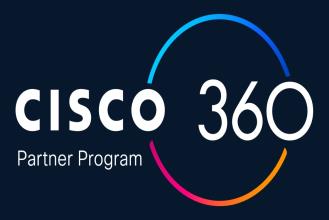Pure Storage & Azure: Building AI-Ready Data for Enterprises
- 24 November, 2025 / by Fosbite
Why enterprises struggle to modernise infrastructure for AI
Most organisations I talk to want cloud agility and scale yet mission-critical apps still live on VMs and on-prem arrays. The truth is, there’s a big tension: keep proven operations intact or move fast to enable AI. I’ve seen teams try the easy route lift workloads to Azure with few changes and end up with surprise costs and flaky performance. That friction, not the technology itself, is usually the real roadblock to AI adoption. For broader industry patterns, see Generative AI Trends 2025.
How Microsoft and storage vendors are easing migration friction
Vendors like Pure Storage have partnered with Microsoft Azure to smooth the path: think staged migrations, Azure-managed storage that plays nicely with existing arrays, and fewer required app rewrites. Those are practical wins you can test behaviour first, then optimise for performance and cost. For context on how enterprise compute partnerships are evolving, the Microsoft, NVIDIA & Anthropic Compute Alliance is a useful reference.
Key benefits organisations report:
- Much more predictable storage costs when you combine on-prem hardware with Azure-managed storage services rather than guessing capacity.
- Phased migration validate on a small set of AI workloads before committing to refactors or a full replatform.
- Minimal code changes for legacy apps, which cuts timelines and reduces execution risk.
How can hybrid models protect sensitive data and meet compliance?
Regulated industries don’t just worry about latency or cost they worry about residency, auditability and immutability. A common, sensible pattern is a unified control plane that spans on-premises arrays, edge locations and Azure. That gives you immutable snapshots, fine-grained replication and full audit trails the things auditors actually care about. For organisations assessing their security posture, the guide on AI in Cybersecurity outlines relevant risks.
I once spoke with a bank that kept customer PII on-country on their Pure Storage arrays, while indexing and running analytics in Azure. They replicated de-identified records for model training compliance boxes ticked, and teams could still experiment with AI. Practical, not theoretical.
Best practices for hybrid compliance
- Implement immutable snapshots and air-gapped backups where regulations demand long retention don’t cut corners.
- Use targeted replication to keep local copies for residency while enabling global analytics on de-identified sets.
- Adopt a single control plane for visibility across all locations it reduces human error and speeds incident response.
AI readiness: improve data foundations instead of rebuilding everything
You rarely need a wholesale rip-and-replace to get AI-ready. More often, you improve what you have: add vector indexing, tune throughput, and reduce latency. SQL Server 2025’s vector database features are a great example they let teams embed similarity search directly into existing apps instead of standing up a separate vector store. For inspiration on practical business applications, see 27 Real-World AI & Machine Learning Examples.
Take a retailer I worked with: by using SQL Server 2025’s vector search features together with high-performance Pure Storage arrays, they shrank their working set with smarter indexing and saw much faster inference for recommendations without adopting an entirely new AI platform. Small moves, big impact.
How to prioritise AI investments
- Start small with pilot AI workloads that prove measurable business value (recommendations, fraud detection, chat assistants).
- Focus on data hygiene and indexing better-organised data often nets more model improvement than a bigger model.
- Measure cost and latency per inference so you can plan capacity before doing full-scale training or deployment.
What happens when Kubernetes meets legacy systems?
Containers and VMs increasingly run side-by-side. Managing AKS or Azure Red Hat OpenShift alongside legacy VMs adds complexity. Tools like Portworx and KubeVirt help bridge that gap by providing persistent storage for containers and enabling VMs on Kubernetes preserving automation and reducing disruption. If you want an example of how infrastructure strains under demand, the Cloudflare Outage 2025 is a timely illustration.
Teams using these approaches often report reduced overprovisioning, simpler capacity planning, and the ability to transition to cloud-native at a deliberate pace. In practice, you keep the skills your ops team already has while opening the door to containerised inference and other AI workloads.
Concrete example: phased AI adoption with minimal risk
Picture a mid-sized insurer wanting claim-triage AI. Rather than replatforming everything, they take these steps:
- Keep customer PII in-country on Pure Storage arrays to meet regulatory constraints.
- Replicate de-identified claims metadata to Azure for model training and inference.
- Use SQL Server 2025 vector features for fast similarity searches during triage.
- Run containerised inference on AKS using Portworx for persistent volumes.
Architects I spoke with said this approach reduced risk and time-to-value while preserving compliance and they could expand the scope once pilots proved the economics. For macro trends on why data infrastructure is evolving this way, see Asia-Pacific Data Centres Becoming AI Factories.
Key takeaways for IT leaders planning modernisation
- Modernise in stages: validate on Azure-managed storage and small AI workloads before refactoring apps.
- Protect data first: immutable backups, local residency and unified visibility are non-negotiable for regulated organisations.
- Improve data foundations: vector indexing, throughput tuning and storage upgrades can make existing data AI-ready.
- Choose hybrid tools that respect current skills: pick solutions that integrate VMs, containers and cloud services without forcing an abrupt change.
Bottom line the path to enterprise AI is usually incremental. Expect smaller, deliberate steps that lower cost and risk while unlocking value from the data you already have.
Further reading and events
For broader executive guidance on AI strategy, Bain & Company’s summary is useful: Bain & Company issues AI Guide for CEOs (AI News).
If you want hands-on sessions about AI and big data, the AI & Big Data Expo runs in Amsterdam, California and London: AI & Big Data Expo. The event network is part of TechEx: TechEx, and TechForge Media lists related events and webinars here.
Note: this article reflects common vendor approaches and patterns reported by IT teams exploring hybrid data architecture for AI. From experience, incremental modernisation that prioritises data protection and predictable cost control tends to deliver the best long-term ROI.









